It took a state funeral of the longest-reigning monarch in the modern world to see Empress Masako of Japan come out in the global view. Since joining the Japanese imperial family, she is a bit of an enigma to international royal fans.
Following the birth of her only child in 2001, she withdrew from public life after suffering from what the Japanese imperial palace officials have claimed "adjustment disorder". A stress-related disorder rooted in her inability to fully adjust to an imperial life.
On September 19, 2022, as the world bid goodbye to Queen Elizabeth II of the United Kingdom, Empress Masako was a picture of elegance, walking behind her husband, Emperor Naruhito of Japan, and other royals, to Westminster Abbey, without any hint of stress-related illnesses.
For the empress, who has long been battling with chronic anxiety, it was a brave appearance in a foreign royal event, which she had not made since attending the coronation of Tonga's King Tupou VI in 2015.
An extraordinary exemption
During Queen Elizabeth II's long reign, the British royal family and the Japanese imperial family maintained friendly relations. The Queen even made Emperor Akihito an Extra Knight member of the Noble Order of the Garter, the highest Order of Chivalry in the British Knighthood, in 1998.
We don't often hear news about the empress so let's get to know more about her and her struggle to fit into the very public life of a traditionally-bound Japanese imperial family.
Growing Up Years
Among the reigning consorts in the world, Empress Masako, safe to say, has the most impressive career record and educational background. She practically grew up in the United States and is fluent in English, Japanese, French, German, and Russian.
She was born on December 9, 1963, in Tokyo, the capital of Japan, and her father was a former Japanese diplomat and Judge, Hisashi Owada. Due to her father's occupation in the Foreign Ministry office, Masako lived in many parts of the world.
When she was two years old, her father was posted as a diplomat to Russia, and the family lived in Moscow for three years. They later moved to New York, where she completed her kindergarten.
Although she completed her primary school in Tokyo, she finished her secondary school in Boston, Massachusetts. She also obtained her BA degree in Economics from Harvard University as Magna Cum Laude in 1985.
After graduation, Masako moved back to Japan and studied law at the University of Tokyo to prepare for the Japanese Ministry of Foreign Affairs entrance examination. She was one of the fewest examinees to pass the rigid exam, and in 1988, Masako was chosen by the Japanese Ministry to be sponsored for two years of postgraduate study.
She desperately wanted to go back to Harvard to do her master's degree. According to her former Harvard adviser, Oliver Oldman, she "tried to re-enroll to work towards a Juris Doctor".
However, Harvard's bureaucrats would not give her credit for her study time at the University of Tokyo. So she took up International Relations at Oxford University's Balliol College in England, instead. She returned to Japan in 1990.
Engagement to Crown Prince Naruhito
She first met Crown Prince Naruhito, three years her senior, at a tea he hosted for Infanta Elena of Spain, in November 1986, during her studies at the University of Tokyo. According to the Japanese press, the prince was immediately captivated by her personality and intellect.
However, Masako was far from the ideal imperial bride that the imperial household had envisioned for the Crown Prince.
According to the Washington Post in 1991, the imperial household was looking for a delicate, "tight-lip" woman, not taller than the Crown Prince (he stands 5 feet and 4 inches tall). And not more than 24 years old.
 |
| Emperor Akihito, Crown Prince Naruhito, Crown Princess Masako and Empress Michiko |
Masako Owada, a career-oriented woman, is outspoken, and far from being a "tight-lip" lady. She also stands 5 feet and 6 inches tall and was 27 years old by the time the press disclosed Crown Prince Naruhito's intention to marry her. She was everything the Japanese imperial household was not looking for in a future empress consort.
But the Crown Prince was smitten with her and he pursued her relentlessly since 1986. Masako on her part did not want to marry Crown Prince Naruhito for fear of losing her freedom. She also did not want to give up her promising career in diplomacy.
Crown Princess Masako became the third commoner to marry into the Japanese imperial family, after her mother-in-law, Empress Michiko, and her sister-in-law, Princess Kiko, the wife of Fumihito, Prince Akishino.
Japanese nobility was abolished in 1947 so it's impossible to find someone of noble blood in Japan. The imperial family was streamlined to the descendants of Emperor Taisho (Naruhito's great-grandfather) so there's no other aristocratic blood in Japan other than the members of the House of Chrysanthemum, the reigning imperial house of Japan.
The gradual decline of public appearances
Crown Princess Masako's inclusion into the Japanese imperial family created a frenzied media interest. Having been raised in the west and with a budding career in diplomacy, she was hailed as a figure who could break the confines of the exclusive, patriarchal traditions of one of the world's oldest monarchies.
She was hailed by the public as a figure who could usher the transition of the monarchy from its archaic ways to modernity, and who could potentially break the mold of the age-old, obsolete traditions to respond to the call of times. Too much expectations indeed.
 |
| Crown Prince Naruhito and Crown Princess Masako |
However, the result was not what the public had expected. Instead of coming out as a heroine, her life inside the imperial household ultimately became a personal tragedy. Crown Princess Masako would later live a life of seclusion inside the Togu Palace without a voice of her own.
Pressure and anxiety began to shroud her outgoing and bubbly personality. It was made worse when she did not conceive for six years after the wedding. The pressure to provide the throne with a male heir took a huge toll on her mental health.
 |
| Crown Prince Naruhito and Crown Princess Masako |
As Japan still follows the Agnatic Primogeniture Law of Succession where only male descendants can succeed to the Chrysanthemum (Japanese) throne, Crown Princess Masako felt pressured to give birth to a boy.
In 1999, a local newspaper revealed the Crown Princess was pregnant, but weeks later, she suffered a miscarriage. The situation caused her so much stress and the imperial household blamed the press for prematurely disclosing the pregnancy.
The Crown Princess finally gave birth to a baby girl, Princess Aiko, on December 1, 2001. However, it was not the heir that everyone expected. And the Japanese throne ultimately faced a succession crisis. This complicated issue of providing the throne with a male heir caused Crown Princess Aiko to suffer from chronic anxiety.
In July 2004, she was reportedly diagnosed with "adjustment disorder" and was seeking medical treatment. Her withdrawal from public duties left frenzied speculation from the public but the imperial household did not give details about her absence.
 |
| The Emperor and Empress of Japan and their only child, Princess Aiko |
The birth of a girl sparked a debate in Japan on whether to change the Law of Succession to male-preference primogeniture or Absolute primogeniture to allow Princess Aiko to succeed her father.
In 2005, a government-appointed panel of experts submitted a report recommending that the Imperial Succession Law be amended to permit Princess Aiko to be the first Japanese empress regnant.
However, a year later, in September 2006, all plans were scrapped when Princess Kiko, the wife of Crown Prince Naruhito's brother, Prince Fumihito, gave birth to a son, Prince Hisahito.
The Japanese parliament still adheres to the ancient imperial ethos of giving the throne to male heirs only and believing that male-line succession is a statement of stability and power.
Some experts on monarchy discussion blamed the administration of Prime Minister Shinzo Abe for wasting the opportunity in 2006 to make a coherent decision on altering the law on succession.
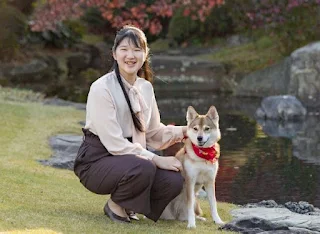 |
| Princess Aiko, the Princess Toshi, only child of Emperor Naruhito |
As she gradually disappeared from public view, her notable absence from royal events gave rise to speculations on whether she was suffering from clinical depression for her inability to produce a much-needed male heir.
The imperial household would not say anything other than the Crown Princess was suffering from "adjustment disorder", defined as a stress-related disorder attributed to her difficult adjustment into the imperial life where public appearances are highly choreographed events.
 |
| Princess Aiko and her parents, Emperor and Empress of Japan |
Crown Prince Naruhito was true to his promise of protecting his wife for life, a promise he made during his marriage proposal in 1992. He did everything he could to shield his wife from criticism and kept her safe within the palace wall.
Crown Princess Masako remained devoted to her marriage. She would occasionally emerge to accompany her husband on family outings and on sending Princess Aiko to school.
She finally came out in 2013, when she accompanied Crown Prince Naruhito to The Netherlands during the enthronement of King Willem-Alexander. She also accompanied her husband to Tonga for the coronation ceremony of the new Tongan monarch, King Tupou VI, in 2015.
Empress Consort
On April 30, 2019, her father-in-law, Emperor Akihito, abdicated the throne after reigning for 30 years, and her husband, Naruhito, became the new emperor. Many have feared the new empress might not be able to attend the enthronement ceremony due to her delicate health.
Empress Masako's doctor said she was not fully recovered, but her strong sense of duty and commitment to providing support to her husband were factors of her strength to be at the ceremony in a stable condition.
The new empress also attended a traditional ritual at the Ise Grand Shrine of Geku with Emperor Naruhito in Ise, Mie Prefecture in Japan, to mark the completion of the emperor's enthronement.
Defying Public Opinion
Empress Masako continues to defy public opinion in Japan regarding her mental state. During her husband's accession to the throne, many worried her new role as empress consort will worsen her illness.
However, she surprised the public with her approach to her new role. Together with Emperor Naruhito, she brought a more relaxed touch to the rigid tradition of the imperial family, laughing with children, playing with dogs, and chatting with foreign dignitaries in English during an official visit.
 |
| Empress Masako of Japan |
Emperor Naruhito and Empress Masako are Japan's first imperial couple with university degrees and who could speak fluent English. They both attended post-graduate studies at Oxford University in England, so when meeting foreign officials, they would not use an interpreter.
"She has improved with regard to her public duties and is participating in various events," said Hidehiko Kasahara, a professor at Keio University who specializes in royal issues. "Of course, her health is an issue so there are ups and downs, but worries have rather faded."
Though an increase in responsibilities means Empress Masako may have more constraints on her time, ascending to the position may have also given her more freedom in the protocol-bound court.
"When Masako meets foreign dignitaries she has confidence and her conversation has substance," Kasahara said. "The fact that she can act as she wants means there is less stress. Rather, it's a plus for her recovery."
 |
| Empress Masako of Japan's 58th birthday photo |
On December 9, 2021, the empress turned 58. On one of the rarest occasions in her life as part of the imperial family, Empress Masako released a statement to mark her birthday, expressing gratitude to her husband for his protection and support through all these years, and wishes for her daughter, Princess Aiko, who just turned 20.
"It is hard to believe that little Aiko is already an adult. I would like to express my heartfelt gratitude to everyone who has warmly watched over her growth," she said. She also added that she is doing her best to recover so that she "can support the emperor by his side and fulfill my own duties."
 |
| Japanese imperial household released this photo to mark the empress' 58th birthday |
The empress also offered her sympathies to those affected by the pandemic. "My heart aches to hear that many people have been faced with hardships such as reduced income, or having to abandon higher education," she said.
Her doctors said in a separate statement that while she has shown signs of improvement, Empress Masako's condition fluctuates. They said she needs time to adjust to the new environment in the Imperial Palace, having only moved there from the Akasaka Imperial Residence in September 2021.
 |
| Emperor Naruhito and Empress Masako in Utsonomiya, Tochigi |
On October 1, 2022, the Imperial couple attended the general opening ceremony of the National Sports Festival in Utsunomiya, the capital of Tochigi Prefecture, in Japan. It was a rare trip outside Tokyo for the imperial couple in the age of the coronavirus. It was also the first public event they attended since the state funeral of Queen Elizabeth II.
 |
| Emperor Naruhito and Empress Masako in Utsonomiya, Tochigi |
We are fervently hoping for Empress Masako's full recovery. Wishing her good health as she slowly resumed public duties.
Line of Succession to the Chrysanthemum throne as of October 2022:
- Crown Prince Fumihito - younger brother of Emperor Naruhito (56 years old)
- Prince Hisahito - only son of the Crown Prince (16 years old)
- Prince Masahito - only brother of Emperor emeritus Akihito (86 years old, no children)
Related Story:
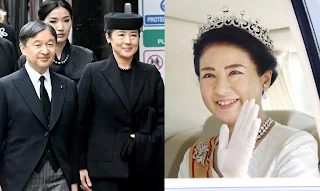









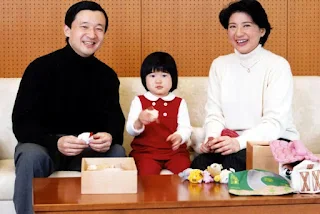
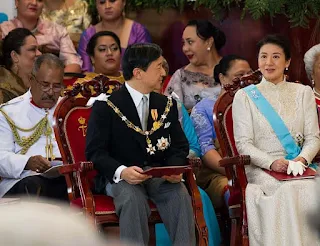


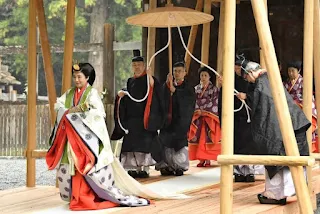
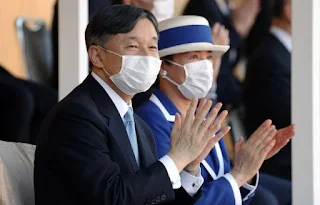






0 Comments